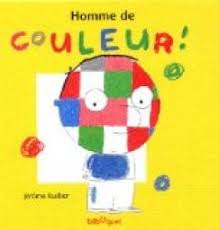
I have no idea how it has taken me so long to acquire the book, never mind write a blog on it, because it is such a powerful story! I am sure many of you know it and have used it before; if not, check it out!
Type of text: picture book
Author or source: Jérôme Ruillier
Intended age of students: Key Stages 1/2/3
Source reference: 9782841812608
Approaches:
I want to read it to children who already know their colours and can join in, as I show them the pages, and say the colours in French. At the end I will ask them what they think the story is about and we will discuss it: how some people might get called “coloured” when really the person whose colour changes the most truly is a white person’s!
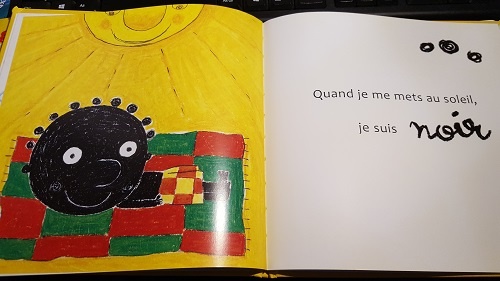
When we have finished playing with the text, the children can draw/paint/design their own versions of black and multicoloured friends.
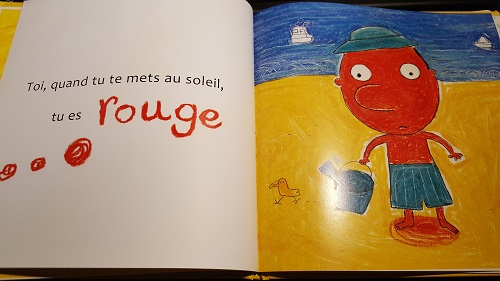
Rationale:
I want to use it because it is a very powerful story which reminds us that we are all the same really, human beings with emotions who live and die! It enables us to revise colours and revisit or introduce certain grammatical points (see below) whilst discussing equality.
Outcomes:
The children could in the end learn the text either as the text or the original poem by Léopold Sédar SENGHOR. This could be performed by individuals for a competition or as a class in assembly.
The children could also make their own version of the story and, if they can think of any extra feelings and colours, add them in!
Thank you to Sarah Tatman from the Languages in Primary Schools Facebook group for sharing her pupils’ work, please see below!
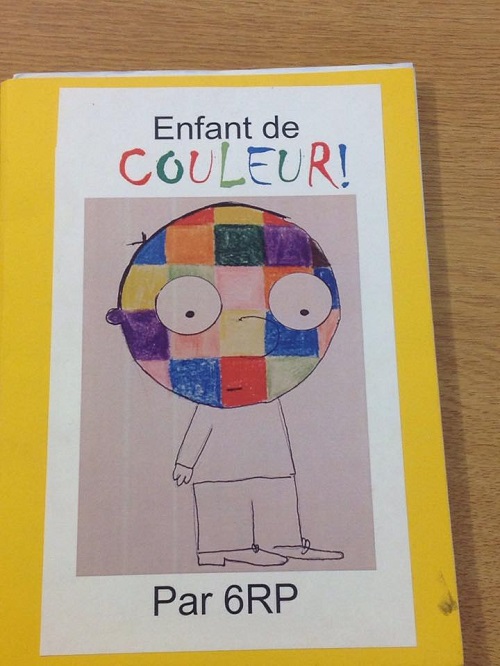
Sarah said: “Book created by one of my classes with very little language. We brainstormed feelings, created mini dictionaries then wrote pages for the book using the model “Quand je suis triste, je suis rouge.” More able children added stripes, dots etc. One native speaker used past and future tenses too.”
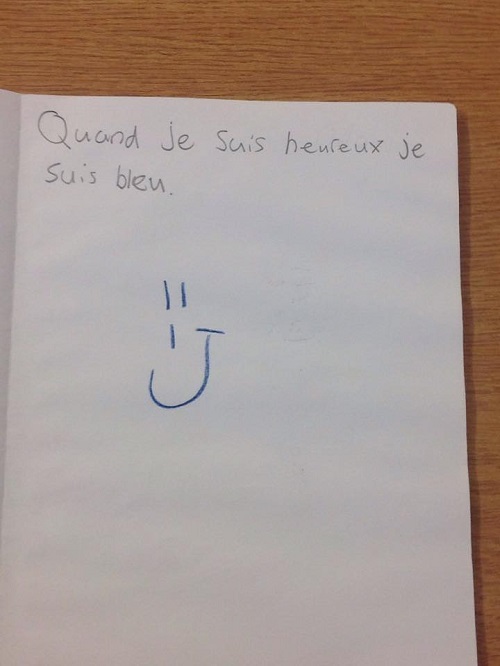
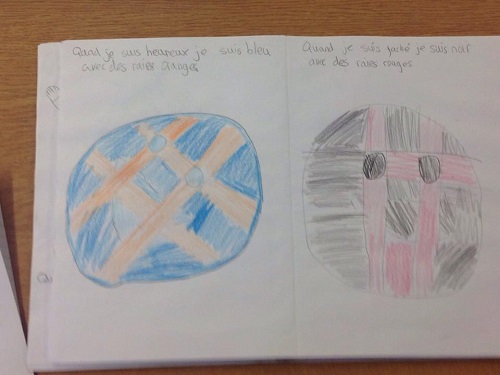
Topics or themes:
colours; all different all equal
Grammar:
introduction to the past tense; introduction to the future tense; extended sentences with “quand”; 1st and 2nd persons of verbs.
How much time required:
1-2 lessons
You can buy the book in French from Little linguist here.
Are you looking for other French stories with BAME characters in them? Then click here for a specific blog on this topic.
N.B. Would you like to read about books, ideas, resources and opportunities for the primary languages classroom? Then click here to receive a monthly round up of my blog (and more!) straight in your mail box!

